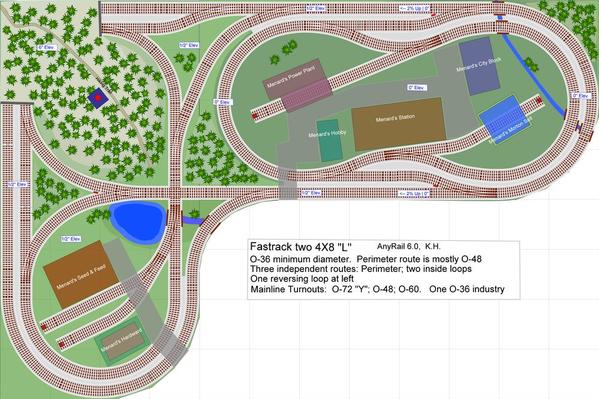

I am considering keeping with the 3 level approach to things. I don't have the space available to do the exact same size of layout. With that layout type in mind, that is where my current program is giving me the headaches on the helix construction. What I have envisioned for my railway layout to be is along the lines of Cliff Powers' layout from the Great Model Railroads 2013 Holiday 2012 issue.
#ANYRAIL 6 GRADES PROFESSIONAL#
But, speaking as a professional CAD user of such CAD packages as Computervision, Unigraphics and CATIA, I think it's realistic).
#ANYRAIL 6 GRADES FREE#
But in that case you should choose one of the comprehensive packages (CadRail or 3rdPlanIt!), as from what I've seen, the free packages aren't really adequate (I know, there will be a lot of pushback on that comment. For large, complex layouts, I'd say learning a CAD system is definitely worth it, even for just the one plan. Paul is probably right in his assertion that "learning a CAD program for this plan only usually is not worth the trouble." For small-to-medium-size layouts I agree completely, unless you have a particular interest in learning CAD anyway. It would have been easy to mis-calculate elevations by hand, and wind up with tracks crossing (or just plain colliding!) with too little vertical clearance. In designing my old CB&Q in Wyoming layout, with it's multiple decks, multi-track helix and elevation changes within each deck, CadRail was instrumental in making that complex design workable. Elevations, or one elevation and a grade, can be assigned to the helix (or any other trackage, for that matter). I use CadRail which, like 3rdPlanit!, is a fully operational 3D design package. No offense Paul, but this statement leads me to believe you've never used any sort of comprehensive CAD system for layout design. You'd better be a bit conservative here then building a helix with awkward properties. Stringlining is caused by the angle of cars on a curve, but depends heavily on trainlength, carlength, the weight of cars, the grade of the tracks and your hand on the throttle. Which might be translated to a radius large enough to prevent string-lining (a train climbing the inner rail of a curve) and as a result prevent a train from derailing. The LDSIG (layout design special interest group) tells you to use a radius about 3 times the length of your longest piece of equipment for getting trains tracking really well. More important however is the chosen minimum radius for the layout as a whole, but especially within the helix. Anything under 26 to 28 is asking for trouble. Besides in his Track Planning For Realistic Operation you'll find his idea's presented in some other Kalmbach publications, like in 102 Realistic Track Plans.Ī helix in CAD can be rendered by just a circle.

The beauty of his system is you don't even need a ruler or a compass. Planning with Armstrong squares and being a bit conservative will do the very same to you. It will also keep you from being overly optimistic.

Though it will give you a neat rendering that can be uploaded on here. Learning a CAD program for this plan only usually is not worth the trouble.


 0 kommentar(er)
0 kommentar(er)
